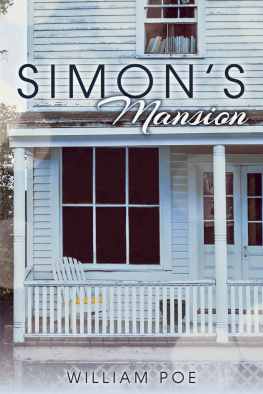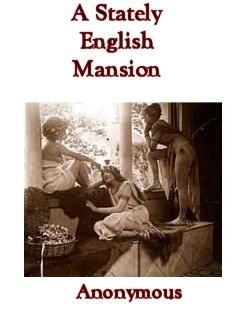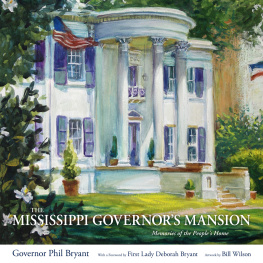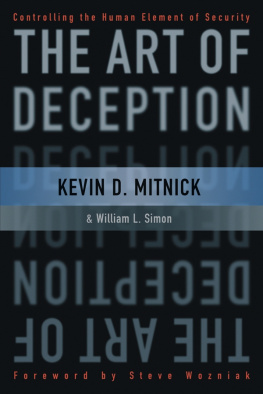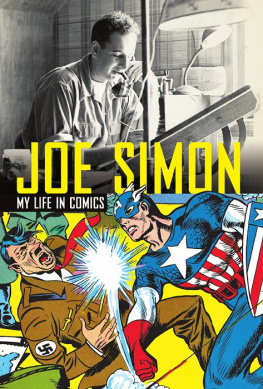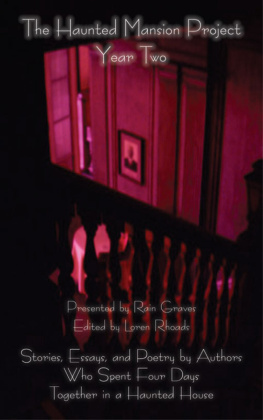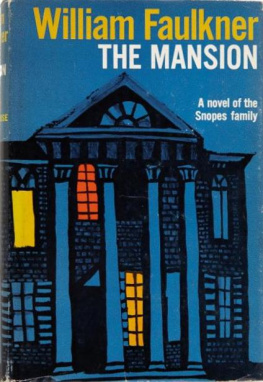William Poe [Poe - Simon’s Mansion
Here you can read online William Poe [Poe - Simon’s Mansion full text of the book (entire story) in english for free. Download pdf and epub, get meaning, cover and reviews about this ebook. year: 2019, publisher: William Poe, genre: Detective and thriller. Description of the work, (preface) as well as reviews are available. Best literature library LitArk.com created for fans of good reading and offers a wide selection of genres:
Romance novel
Science fiction
Adventure
Detective
Science
History
Home and family
Prose
Art
Politics
Computer
Non-fiction
Religion
Business
Children
Humor
Choose a favorite category and find really read worthwhile books. Enjoy immersion in the world of imagination, feel the emotions of the characters or learn something new for yourself, make an fascinating discovery.
- Book:Simon’s Mansion
- Author:
- Publisher:William Poe
- Genre:
- Year:2019
- Rating:3 / 5
- Favourites:Add to favourites
- Your mark:
- 60
- 1
- 2
- 3
- 4
- 5
Simon’s Mansion: summary, description and annotation
We offer to read an annotation, description, summary or preface (depends on what the author of the book "Simon’s Mansion" wrote himself). If you haven't found the necessary information about the book — write in the comments, we will try to find it.
William Poe [Poe: author's other books
Who wrote Simon’s Mansion? Find out the surname, the name of the author of the book and a list of all author's works by series.
Simon’s Mansion — read online for free the complete book (whole text) full work
Below is the text of the book, divided by pages. System saving the place of the last page read, allows you to conveniently read the book "Simon’s Mansion" online for free, without having to search again every time where you left off. Put a bookmark, and you can go to the page where you finished reading at any time.
Font size:
Interval:
Bookmark:
SIMONS MANSION
Reviews for author William Poe
Simple Simons message of reconciliation and hope is truly for anyone who has struggled to resolve the truth they know about themselves with the way others see them. The power of forgiveness and acceptance can resonate with all readers.
Melissa Wuske, Foreword Reviews, on Simple Simon
Poes narrative moves quickly and smoothly and fills in the blanks left in Simon Says. These first novels by Poe will leave his readership wonderingand waiting forwhat he comes up with next.
Publishers Weekly on Simple Simon
Stark and gritty, Poes story about the search for self-discovery is a sobering testament to the authors own personal journey which makes the story resonate that much more.
Publishers Weekly on Simon Says
SIMONS MANSION
William Poe
This is a work of fiction. Names, characters, places, and incidents are the products of the authors imagination or are used fictitiously. Any resemblance to actual events, locales, or persons, living or dead, is entirely coincidental.
Copyright 2019 by William Poe
All rights reserved. This book or any portion thereof may not be reproduced or used in any manner whatsoever without the express written permission of the publisher except for the use of brief quotations in a book review.
ISBN-13: 9781729078433
Youll get back to where you came from.
William Golding, Lord of the Flies
CONTENTS
G rowing up in the small town of Sibley, Arkansas, living in the timber mansion his family built prior to the Civil War, Simon Powell felt out of place and out of time. It is said that culture takes root early in a childs life, but that didnt apply to Simon; he claimed allegiance to a home planet orbiting a distant star, an idea that occurred to him after watching Forbidden Planet on a Friday night when his mother allowed him to stay up late. So impressed was Simon with the movie that he said to himself, Always remember, you were eight years old when you saw this. That was the age when Simon realized that he felt different from other boys, an awareness that scared him. Forbidden Planet taught Simon that what dwells inside us can destroy us.
Secluded in his bedroom, Simon wondered about life on his home planet of Zenon, recognizing Zenon culture in the paintings of Jackson Pollock and Emile Nolde, which he first saw on the pages of a Funk & Wagnalls yearbook. Pollock and Nolde spoke to Simons alienation, and he began emulating their style, working with finger paints to explore Pollocks sense of ordered chaos, drawing family members in a childs version of Nolde, applying vibrant colors from the box of Crayola crayons that his mother, always attentive to Simons loneliness, gave him as a present on his birthday, never commenting on his strange images and always defending Simon against his father, a man quick to ridicule his peculiar son.
Why paint his face red? And whys that tree purple? Lenny had once asked about a rendering of Simons uncle Jared, identified by the title Jared of Magnolia scrawled at the bottom of the page. Thats something a crazy person would do.
Leave the boy be. Vivian glared at Lenny. Then she turned to Simon and offered, You enjoy yourself, son. She pointed at a wobbly planet orbiting in a hazy solar system drawn above the red-hued cousin and visible through the leaves of the purple tree. Thats your world, isnt it, Simon?
Simon nodded.
In the evenings, Simon occupied himself by sketching scenes of flying saucers piloted by bug-eyed monsters and attacking neighborhoods on Earth as he sat on a TV pillow shaped like a cocker spaniel. Lenny would be watching his favorite television programs, half-asleep from a long day of work as a plumber, fighting to stay awake in order to catch the ending of Gunsmoke if it were a Wednesday. Vivian, who didnt share Lennys affection for television, spent her evenings reading Harlequin Romances, dutifully seated on a sofa next to Lennys La-Z-Boy recliner. When not engaged in drawing monsters, Simon rested on the cocker spaniel pillow, hugging its neck. Vivian periodically lowered her reading glasses and gazed upon Simon; then, believing him content with his pillow friend and drawings, she would return to her fiction.
Upstairs in the timber-hewn mansion, outside the door of Simons bedroom, hung a gallery of charcoal images, portraits of gloomy ancestors rendered in their Sunday best, framed in oak that had aged dark as ebony through years of being treated with Old English furniture oil. Placing his art alongside those stern faces would have affronted the ancient gods, which was how Simons young mind perceived the characters in those portraits, none allowing Simon to walk by without telegraphing their displeasure. Simons art only made sense in his bedroom, where his drawings crowded the spaces between his paintings like fanciful wallpaper.
Lennys mother, whom everyone called Mandy, had been a woman well into her seventies when Simon was born, and she had cared for him as a baby and sat with him at the mansion during his pre-school days, since both Lenny and Vivian worked full-time. It was she who had instilled in Simon an appreciation for family heritage, bringing the gallery of ancestors to life through tales as vivid as if she had witnessed them herself. Mandy had conveyed stories of actual people, not the ephemeral beings with the voyeuristic eyes that peered from the portraits, nor the apparitions known from carvings on the grave markers across the road in the family cemeterya plot of land within sight of Simons bedroom window and denoted by an elaborately molded wrought-iron archway as rusted as the gate it supported.
Simons favorite among Mandys tales was the story of his ancestor James Thomas Powell, JT as he was known, the family patriarch, the man who had lived in the mansion during the Civil War and who had met his end when marauders strung him up because he dared to harbor a wounded Union soldier after the nearby battle of Jenkins Ferry.
Hanged him from that limb right there, Mandy would say. That old tree stands as proud as the day JTs body swung in the wind.
Mandy would point an arthritic finger at the red oak dominating the front yard, the limb that once secured the hangmans rope now supporting a tire swing, and under the swing, a sandbox, favorite playground of Simons oldest niece, Cheryl, and her younger sister, Victoria. They would play there when Simons only sister, Connie, ten years his senior, and her husband, Derek, came for visits from the town of Tulip, where theyd moved to be closer to Dereks parents.
According to JTs will, the oldest child in each generation inherited responsibility for the propertythe mansion, as everyone called it, qualifying for such a grand name due to its size, not for any hint of elegance. Responsibility fell to Lenny upon the death of Aunt Opal, sister to Lennys father, a woman whod spent her final years as caretaker and lone resident and who now guarded the property from a prominent position in the family cemetery, her grave marked by a delicately carved angel, its marble head bowed with graceful hands placed over a sorrowful face, the less-than-life-sized statue sitting on a granite platform, now marred by vandals who sometime in recent years had spray-painted block letters on its edge that read, if one were to look closely enough, witch.
Sibley residents had long accused Simons great-aunt of ungodly behavior, commenting on the fact that she hung talismans from trees around the property, even though many of the areas residents performed a similar act of superstition, placing colored bottles on the ends of dead branches in the belief they captured evil spirits and prevented misfortune. On Halloween, Aunt Opal strung an effigy of JT on the red oak to ward off trick-or-treaters. Aunt Opal knew the good people of Sibley were more likely to leave her alone if they feared being cursed for walking across the property, and Opal valued privacy, finding solace in her life as a recluse.
Next pageFont size:
Interval:
Bookmark:
Similar books «Simon’s Mansion»
Look at similar books to Simon’s Mansion. We have selected literature similar in name and meaning in the hope of providing readers with more options to find new, interesting, not yet read works.
Discussion, reviews of the book Simon’s Mansion and just readers' own opinions. Leave your comments, write what you think about the work, its meaning or the main characters. Specify what exactly you liked and what you didn't like, and why you think so.

